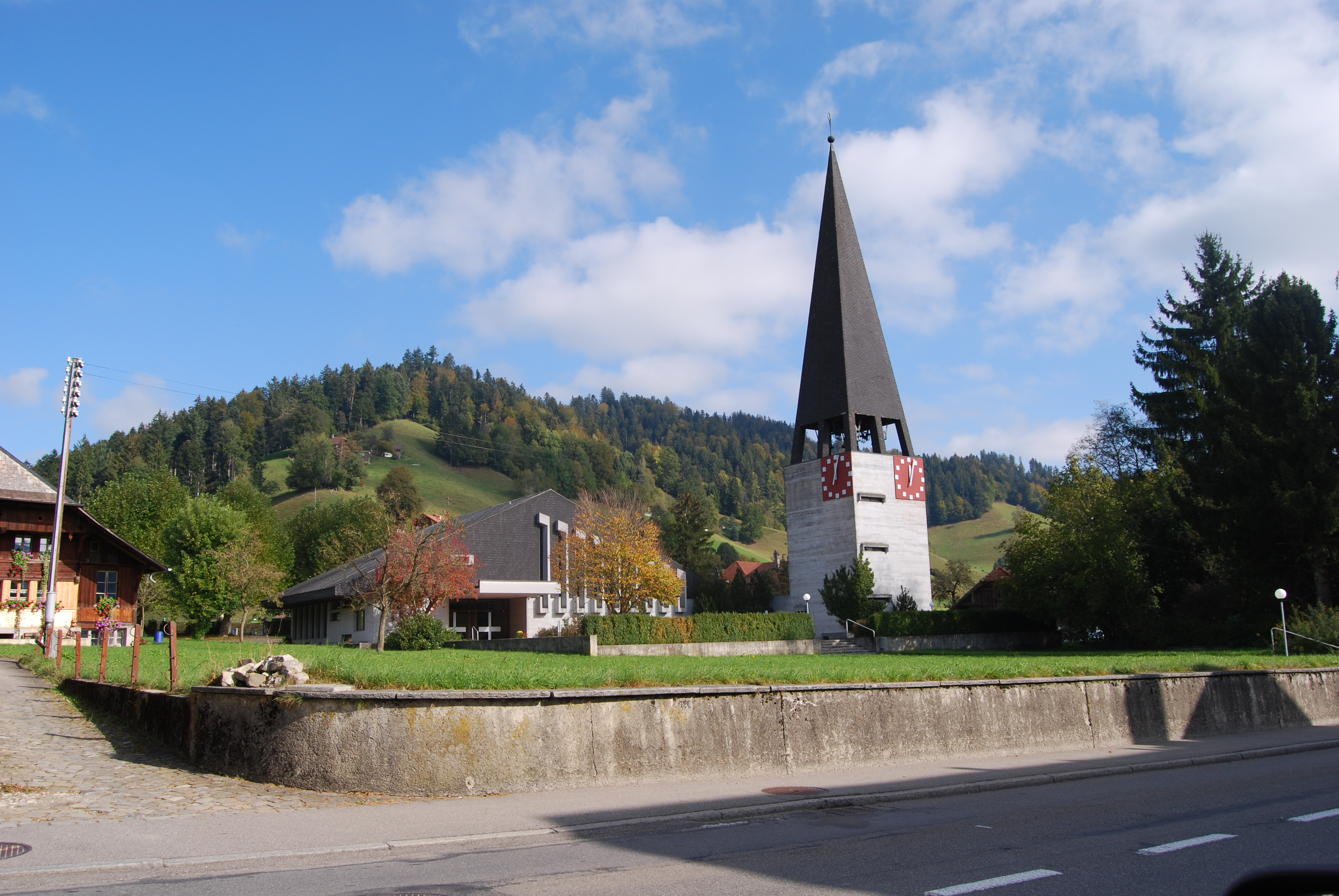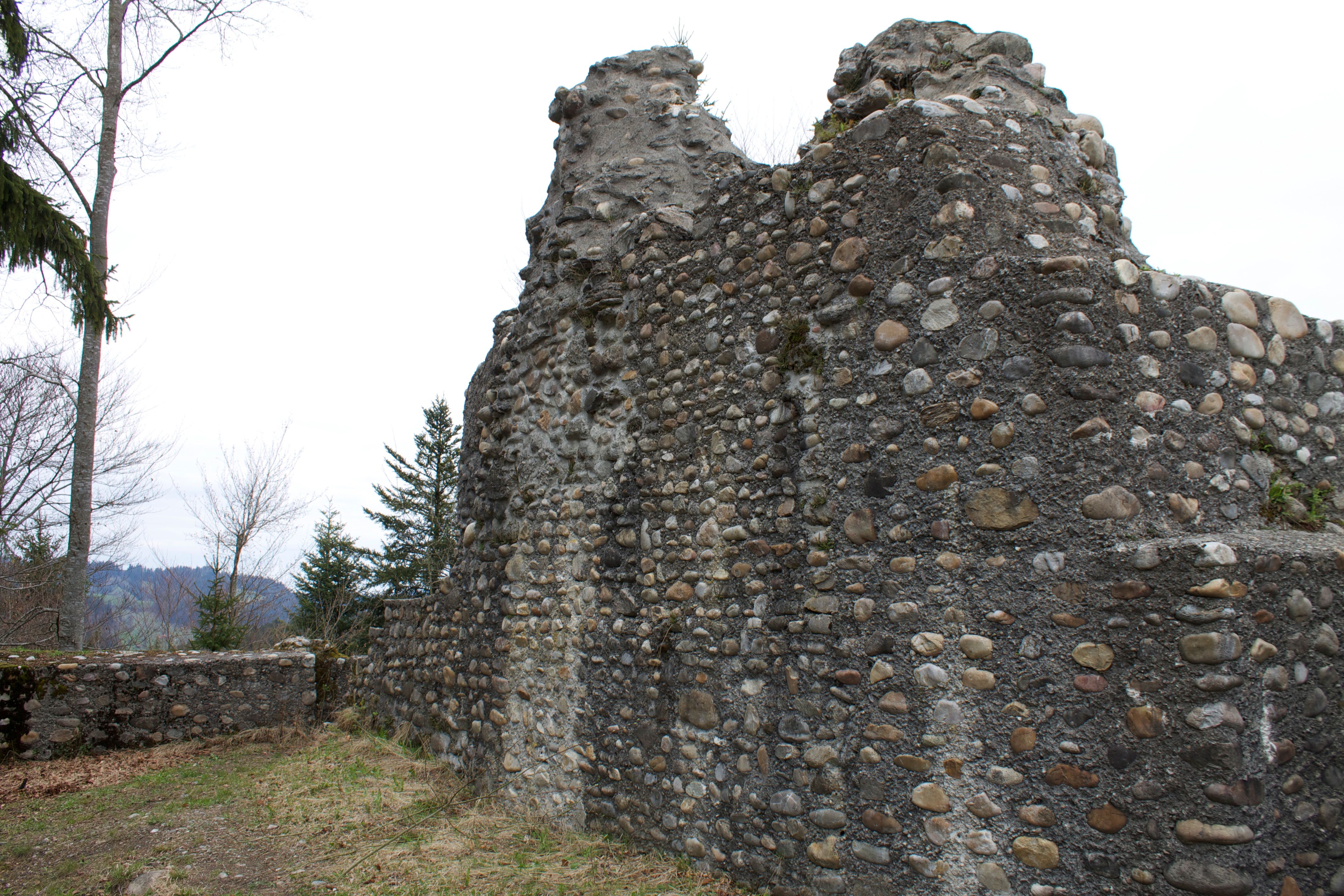|
Zäziwil
Zäziwil is a municipality in the Bern-Mittelland administrative district in the canton of Bern in Switzerland. History Zäziwil is first mentioned in 1299 as ''Cezzenwile''. There are several ruined medieval fortifications scattered around the municipality. These include the ruins in the hills above the village, the earthen fortifications at Schwanden and Zwingherrenhubel and the castle site at Spitzer Chnubel. Very little is known about any of these sites. The village appears in the historical record as a part of the ''Herrschaft'' of Signau. The entire Herrschaft was acquired by the city of Bern in 1529 and became part of the bailiwick of Signau. The villages that make up Zäziwil were part of the large parish of Grosshöchstetten. During the 19th century the villages' population grew and the parish was no longer able to meet the needs of the parishioners. In 1819 a Curate was assigned to the village, followed in 1874 by a Vicar. In 1961 the village became part of a ... [...More Info...] [...Related Items...] OR: [Wikipedia] [Google] [Baidu] |
Bern-Mittelland (administrative District)
Bern-Mittelland District in the Canton of Bern was created on 1 January 2010. It is part of the Bern-Mittelland administrative region, and is the only district in the region. It contains 75 municipalities with an area of and a population () of . It is made up of the valley of the rivers Aare and Emme, some of the foothills of the Bernese Alps, as well as the plain around the capital Bern, and has many small farms and hilly forested regions with small to mid-sized towns scattered throughout. It is perhaps best known by foreigners and visitors for the Emmental. The classic Swiss cheese with holes Emmentaler comes from this region's forests and pastures, of hilly and low mountainous countryside in the range. Municipalities Mergers and name changes *On 1 January 2011 the former municipalities of Albligen and Wahlern merged to form the new municipality of Schwarzenburg. [...More Info...] [...Related Items...] OR: [Wikipedia] [Google] [Baidu] |
Grosshöchstetten
Grosshöchstetten is a municipality in the Bern-Mittelland administrative district in the canton of Bern in Switzerland. On 1 January 2018 the former municipality of Schlosswil merged into the municipality of Grosshöchstetten. History Grosshöchstetten is first mentioned in 1146 as ''Honsteten''. Until 1896 it was known as ''Höchstetten''. The oldest trace of a settlement in the area are two La Tene graves which were discovered in the Buchelhüsli and Hürnbergacker area. During the Late Middle Ages the portions of the village and surrounding fields were owned by a variety of nobles. Eventually much of the village was incorporated in the ''Herrschaft'' of Signau. The village church was first mentioned in 1230, though it was built over the foundation of an 11th-century building. After Bern adopted the Protestant Reformation in 1528, the church came under Bernese patronage. In the same year the ''Herrschaft'' of Wil acquired the village from Signau and in 1534 it was fully inco ... [...More Info...] [...Related Items...] OR: [Wikipedia] [Google] [Baidu] |
Mirchel
Mirchel is a municipality in the Bern-Mittelland administrative district in the canton of Bern in Switzerland. History Mirchel is first mentioned in 1320 as ''Mirchlon''. The oldest traces of a settlement in the area are a La Tene grave and iron tools. During the Middle Ages Mirchel was part of the ''Herrschaft'' of Signau. In 1529 the ''Herrschaft'' came under Bernese control and Mirchel became part of the Bernese bailiwick of Signau. It has always been part of the parish of Möschberg. Beginning in the 1970s many commuters settled in the municipality and today about two-thirds of the working population commutes to jobs nearby cities and towns. Geography Mirchel has an area of . Of this area, or 76.6% is used for agricultural purposes, while or 10.6% is forested. Of the rest of the land, or 13.2% is settled (buildings or roads). [...More Info...] [...Related Items...] OR: [Wikipedia] [Google] [Baidu] |
Oberhünigen
Oberhünigen is a municipality in the Bern-Mittelland administrative district in the canton of Bern in Switzerland. History Oberhünigen is first mentioned in 1148 as ''Huningen superior''. Until 1980 it was an exclave of the municipality of Schlosswil. Throughout its history, Oberhünigen was a small farming village on the edge of the forest. It was part of the court of Wil until 1834 when it became an exclave of Schlosswil. Even after it left the political municipality of Schlosswil, it remained part of the parish. Geography Oberhünigen has an area of . As of 2012, a total of or 38.7% is used for agricultural purposes, while or 57.0% is forested. Of the rest of the land, or 3.5% is settled (buildings or roads), or 0.7% is either rivers or lakes.Swiss Feder ... [...More Info...] [...Related Items...] OR: [Wikipedia] [Google] [Baidu] |
Oberthal, Switzerland
Oberthal is a municipality in the Bern-Mittelland administrative district in the canton of Bern in Switzerland. History Oberthal is first mentioned in 1275 as ''mons Obertal''. The oldest trace of a settlement in the area is the ruins of a castle on the Chnubel spur. However, no records of the castle have survived and nothing is known about it. The scattered villages and farms had a number of landlords including the Counts of Kyburg and the ''Herrschaft'' of Signau. In 1529, Bern gained control over the entire valley and made it part of the new district of Signau. It was part of the parish of Grosshöchstetten. Beginning in the 19th century, many of the local farmers switched from raising grain and crops for local use to raising cattle for milk and cheese. To support the new dairy farmers a total of five dairies were built in the valley. However, a lack of jobs led to population decline as residents left for jobs in the growing cities and towns. Today about half of all jo ... [...More Info...] [...Related Items...] OR: [Wikipedia] [Google] [Baidu] |
Bowil
Bowil is a municipality in the Bern-Mittelland administrative district in the canton of Bern in Switzerland. History Bowil is first mentioned in 1299 as ''Bonwile''. The village was once part of the ''Herrschaft'' of Signau and the Freiherren of Signau built their castles, Alt-Signau and Neu-Signau, between Bowil and Signau villages. Today, the municipal border has been redrawn and the ruins of both castles are in Bowil. During the Middle Ages, Bowil was part of the lands of the Freiherr of Signau, but other distant landowners and local farmers owned rights or property in the village. In 1528, Bern adopted the Protestant Reformation and Bowil quickly followed. However, in the following years, it became a haven for Anabaptists. In 1720, to try to convert the Anabaptists to the Swiss Reformed faith, Bern established a filial church in the village. In 1930 that church became a parish church over the parish of Bowil-Oberthal. Traditionally the village economy relied on sub ... [...More Info...] [...Related Items...] OR: [Wikipedia] [Google] [Baidu] |
Coat Of Arms
A coat of arms is a heraldry, heraldic communication design, visual design on an escutcheon (heraldry), escutcheon (i.e., shield), surcoat, or tabard (the latter two being outer garments). The coat of arms on an escutcheon forms the central element of the full achievement (heraldry), heraldic achievement, which in its whole consists of a shield, supporters, a crest (heraldry), crest, and a motto. A coat of arms is traditionally unique to an individual person, family, state, organization, school or corporation. The term itself of 'coat of arms' describing in modern times just the heraldic design, originates from the description of the entire medieval chainmail 'surcoat' garment used in combat or preparation for the latter. Roll of arms, Rolls of arms are collections of many coats of arms, and since the early Modern Age centuries, they have been a source of information for public showing and tracing the membership of a nobility, noble family, and therefore its genealogy across tim ... [...More Info...] [...Related Items...] OR: [Wikipedia] [Google] [Baidu] |
Hamlet (place)
A hamlet is a human settlement that is smaller than a town or village. Its size relative to a Parish (administrative division), parish can depend on the administration and region. A hamlet may be considered to be a smaller settlement or subdivision or satellite entity to a larger settlement. The word and concept of a hamlet has roots in the Anglo-Norman settlement of England, where the old French ' came to apply to small human settlements. Etymology The word comes from Anglo-Norman language, Anglo-Norman ', corresponding to Old French ', the diminutive of Old French ' meaning a little village. This, in turn, is a diminutive of Old French ', possibly borrowed from (West Germanic languages, West Germanic) Franconian languages. Compare with modern French ', Dutch language, Dutch ', Frisian languages, Frisian ', German ', Old English ' and Modern English ''home''. By country Afghanistan In Afghanistan, the counterpart of the hamlet is the Qila, qala (Dari language, Dari: ... [...More Info...] [...Related Items...] OR: [Wikipedia] [Google] [Baidu] |
Blazon
In heraldry and heraldic vexillology, a blazon is a formal description of a coat of arms, flag or similar emblem, from which the reader can reconstruct the appropriate image. The verb ''to blazon'' means to create such a description. The visual depiction of a coat of arms or flag has traditionally had considerable latitude in design, but a verbal blazon specifies the essentially distinctive elements. A coat of arms or flag is therefore primarily defined not by a picture but rather by the wording of its blazon (though in modern usage flags are often additionally and more precisely defined using geometrical specifications). ''Blazon'' is also the specialized language in which a blazon is written, and, as a verb, the act of writing such a description. ''Blazonry'' is the art, craft or practice of creating a blazon. The language employed in ''blazonry'' has its own vocabulary, grammar and syntax, which becomes essential for comprehension when blazoning a complex coat of arms. Ot ... [...More Info...] [...Related Items...] OR: [Wikipedia] [Google] [Baidu] |
Turkish Language
Turkish ( , ), also referred to as Turkish of Turkey (''Türkiye Türkçesi''), is the most widely spoken of the Turkic languages, with around 80 to 90 million speakers. It is the national language of Turkey and Northern Cyprus. Significant smaller groups of Turkish speakers also exist in Iraq, Syria, Germany, Austria, Bulgaria, North Macedonia, Greece, the Caucasus, and other parts of Europe and Central Asia. Cyprus has requested the European Union to add Turkish as an official language, even though Turkey is not a member state. Turkish is the 13th most spoken language in the world. To the west, the influence of Ottoman Turkish—the variety of the Turkish language that was used as the administrative and literary language of the Ottoman Empire—spread as the Ottoman Empire expanded. In 1928, as one of Atatürk's Reforms in the early years of the Republic of Turkey, the Ottoman Turkish alphabet was replaced with a Latin alphabet. The distinctive characteristics of the Turk ... [...More Info...] [...Related Items...] OR: [Wikipedia] [Google] [Baidu] |
German Language
German ( ) is a West Germanic languages, West Germanic language mainly spoken in Central Europe. It is the most widely spoken and Official language, official or co-official language in Germany, Austria, Switzerland, Liechtenstein, and the Italy, Italian province of South Tyrol. It is also a co-official language of Luxembourg and German-speaking Community of Belgium, Belgium, as well as a national language in Namibia. Outside Germany, it is also spoken by German communities in France (Bas-Rhin), Czech Republic (North Bohemia), Poland (Upper Silesia), Slovakia (Bratislava Region), and Hungary (Sopron). German is most similar to other languages within the West Germanic language branch, including Afrikaans, Dutch language, Dutch, English language, English, the Frisian languages, Low German, Luxembourgish, Scots language, Scots, and Yiddish. It also contains close similarities in vocabulary to some languages in the North Germanic languages, North Germanic group, such as Danish lan ... [...More Info...] [...Related Items...] OR: [Wikipedia] [Google] [Baidu] |






